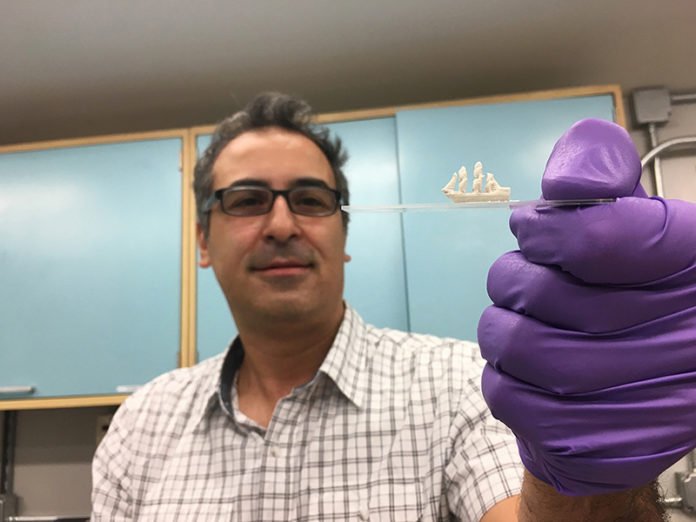Scientists at the Purdue University have developed a new way to 3D print extremely viscous materials, with the consistency of clay or cookie dough with fine precision. The technique allows scientists to 3D print different textures of food; biomedical implants, like dental crowns made of ceramics, can be customized.
Scientists developed this technique by applying high-amplitude ultrasonic vibrations to the nozzle of the 3D printer itself.
Emre Gunduz, assistant research professor in the School of Mechanical Engineering said, “It’s very exciting that we can print materials with consistencies that no one’s been able to print. We found that by vibrating the nozzle in a very specific way, we can reduce the friction on the nozzle walls, and the material just snakes through.”
During the experiment, Scientists were able to print items with 100-micron precision, which is better than most consumer-level 3D printers, while maintaining high print rates.
Gunduz said, “The most common form of 3D printing is a thermoplastic extrusion. That’s usually good enough for prototypes, but for actual fabrication, you need to use materials with high strength, like ceramics or metal composites with a large fraction of solid particles. The precursors for these materials are extremely viscous, and normal 3D printers can’t deposit them, because they can’t be pushed through a small nozzle.”
“The results were really striking. Nobody has ever characterized a viscous flow through a channel this way. We were able to quantify the flow, and understand how our method was actually working.”
It’s difficult to visualize the 3D printing process because the materials used are opaque and the surfaces are hidden inside the nozzle. So the team traveled to Argonne National Laboratory, outside Chicago, to conduct high-speed microscopic X-ray imaging. They were able to see inside the nozzle and precisely measure the flow of the clay-like material for the first time.
Monique McClain, a Ph.D. candidate in Purdue’s School of Aeronautics and Astronautics said: “Solid propellants start out very viscous, like the consistency of cookie dough. It’s very difficult to print because it cures over time, and it’s also very sensitive to temperature. But with this method, we were actually able to print strands of solid propellant that burned comparably to traditionally cast methods.”
McClain tested the combustion by printing two-centimeter samples, igniting them in a high-pressure vessel (up to 1,000 pounds per square inch) and analyzing slow-motion video of the burn.
For solid rocket fuels, 3D printing offers the opportunity to customize the geometry of a rocket and modify its combustion. “We may want to have certain parts burn faster or slower, or something that burns faster in the center than the outside,” McClain says. “We can create this much more precisely with this 3D printing method.”
The research was published in a recent issue of the journal Additive Manufacturing.
